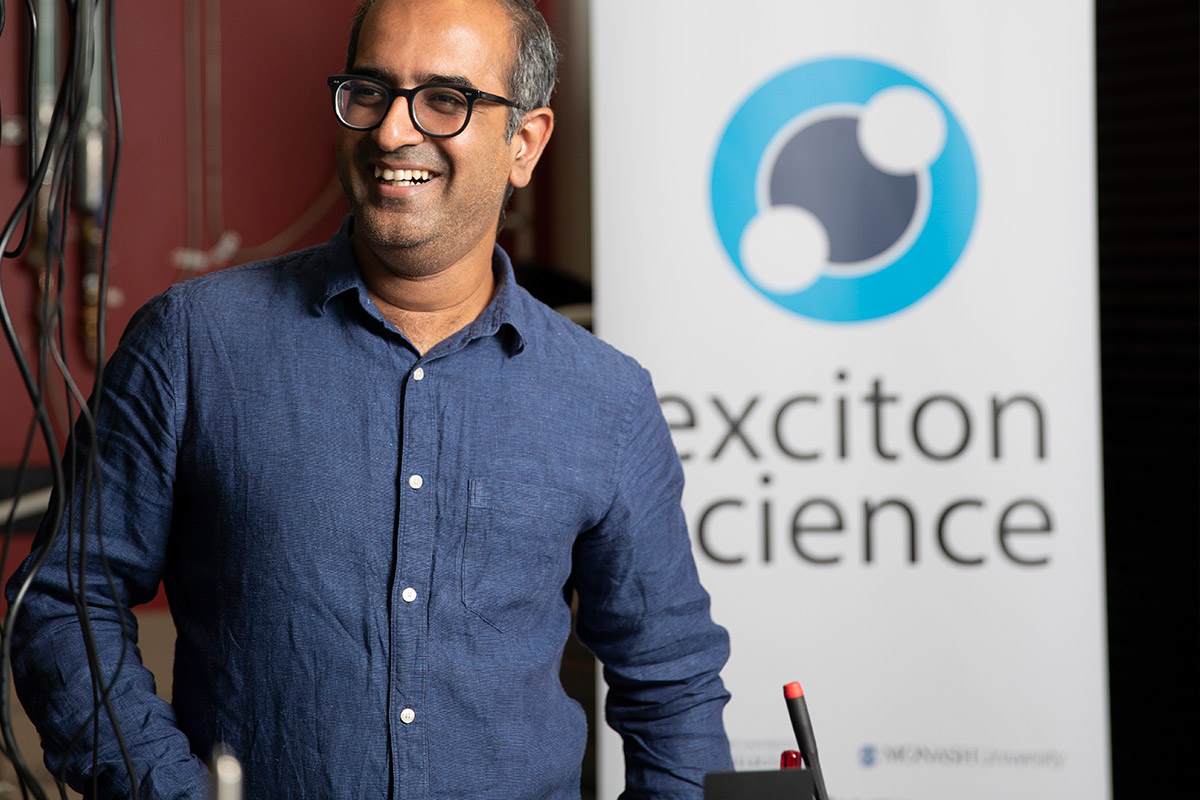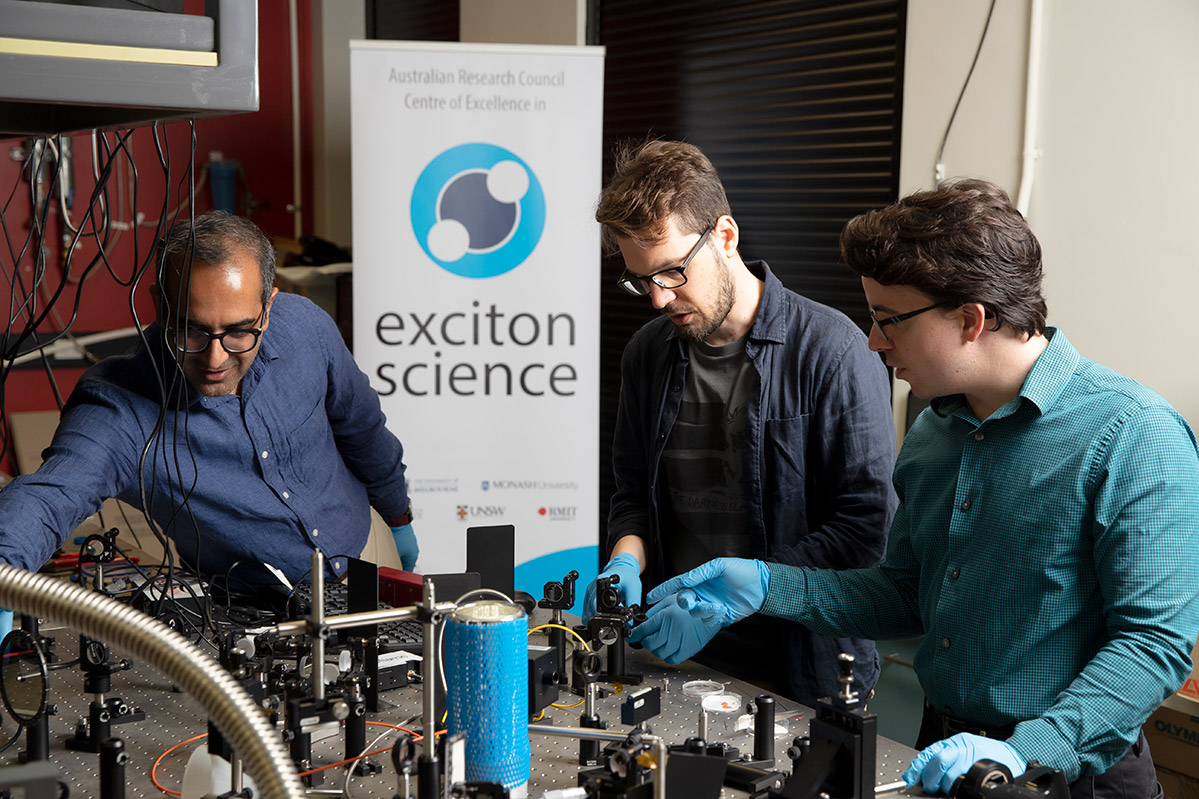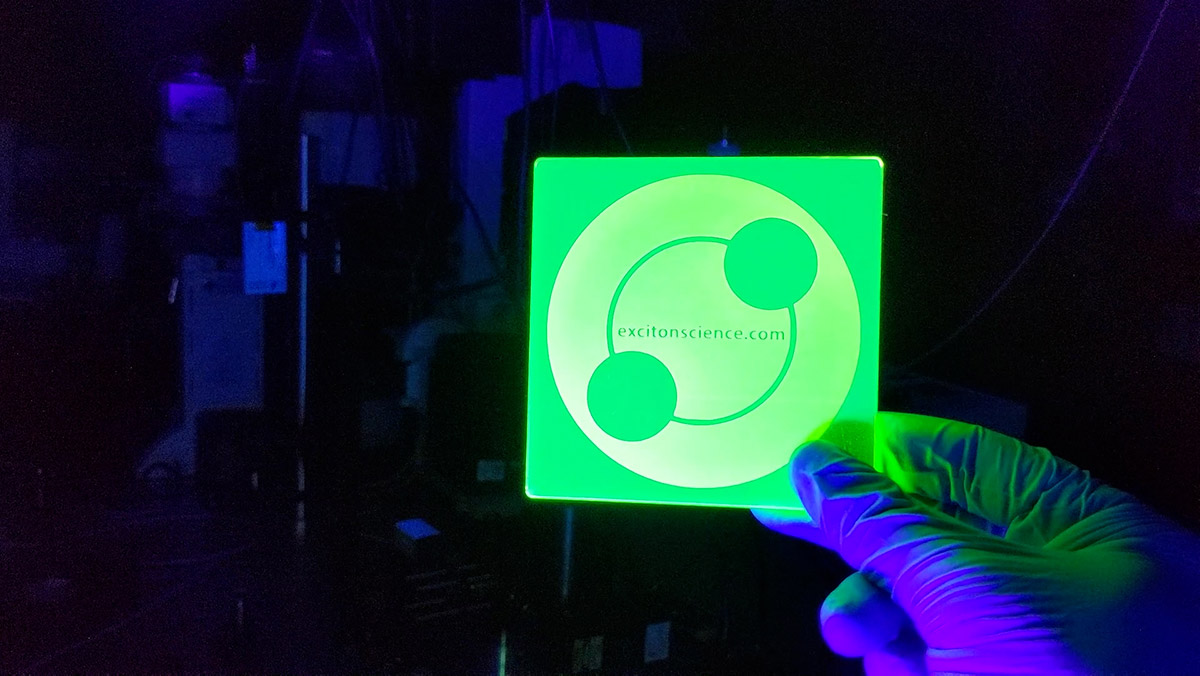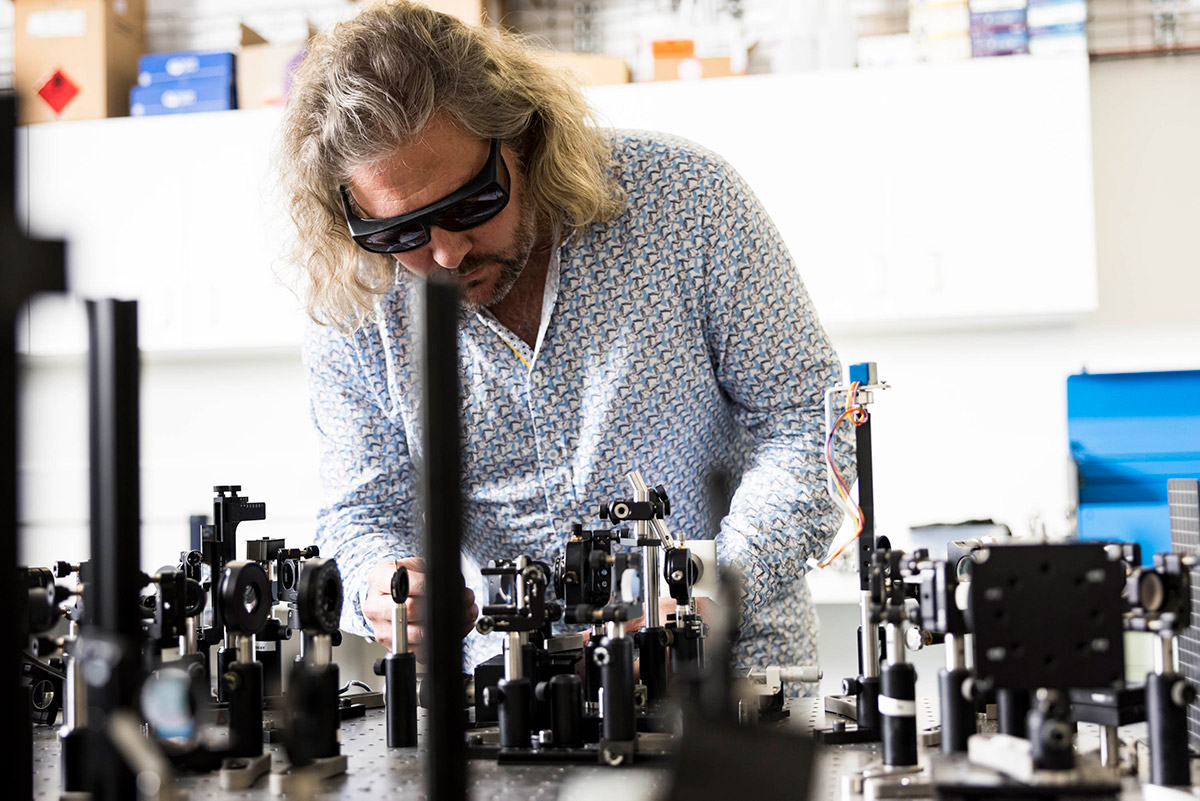Impact
Industry
In this highly competitive and rapidly changing world, accelerating research into promising materials is vital towards achieving academic recognition and securing Intellectual Property. Through its coordinated research approach, Exciton Science works with strategically aligned research partners to help accelerate research outcomes in exciton materials and devices towards commercialisation. Through its flagship Connect Program and other industry engagement initiatives, Exciton Science is committed to developing new materials for energy applications. Read about the progress in 2021 below.
Exciton Science Connect Program
In 2020 the Centre launched the Exciton Science Connect Program with the aim of facilitating partnerships with Australian businesses, organisations and community groups to assist in creating and implementing a low emissions, renewable energy vision for Australia.
Through the Connect Program, Exciton Science is seeking to create industry partnerships, engage with community organisations working towards a renewable energy future, and assist in preparing the skilled workforce for the future, in a manner which encourages researchers and industry to engage, collaborate and seek out new opportunities.
In 2021, Connect Program activities included hearing from ClearVue PV’s CEO Victor Rosenberg at our Summer Seminar. Victor and his ClearVue colleague Mikhail Vasiliev were joined via Zoom by PhD student Timothy Warner and summer student Alice Chen to discuss progress on creating a prototype for a transparent luminescent solar concentrator (LSC) that can be used in ClearVue PV’s products. Work on this project continues, with Tim bringing Victorian-based Martogg Engineering Services into the project to disperse the Centre’s quantum dots into Polyvinyl Butyral (PVB), a resin-like plastic which has strong binding and optical clarity.
Also in 2021, Chief Investigator Girish Lakhwani continued to work with Connect Program Partner BluGlass on modal loss and gain measurements on GaN Lasers. BluGlass representative Josh Brown was generous enough to assist the Centre in its mid-term review process, providing a submission to the Australian Research Council discussing the benefits of working with Exciton Science. He specifically highlighted mutually beneficial opportunities for our students to gain exposure to industry-based projects, expanding their knowledge beyond the academic sphere, which in turn demonstrated to BlueGlass the technical capability they will be able to access as the relationship progresses.
A further exciting project that emerged in 2021 was our collaboration with Young Henry’s Brewery, based in Sydney. The Centre has funded a two-year position based at UNSW Sydney under the supervision of Chief Investigator Timothy Schmidt to explore how the Centre can develop its successful LSC outcomes in creating a sustainable, stand-alone, negative carbon system for the brewing industry. Young Henry’s is a decade-old Sydney brewery which has retained its independence, while still commanding a large commercial reach. They have recently partnered with the UTS Climate Change Cluster to explore the sequestration of CO2 using algae.
Schmidt, in conversations with the Young Henry’s brewing teams, discovered their source of light was white LED strips, powered by the local electricity grid. Schmidt developed the idea to instead capture sunlight directly, and waveguide red light into the algae reactor where it can be harvested by the photosynthetic organisms,creating a truly carbon neutral system.
PVSEC Conference - Industry Sessions
31st International Photovoltaic Science and Engineering Conference (PVSEC-31)
On December 13-15th 2021, the 31st International Photovoltaic Science and Engineering Conference (PVSEC-31) was hosted in Australia for the first time since the PVSEC-4 meeting chaired by Prof. Martin Green in 1989. This year it was chaired by Bram Hoex and run as an online event due to the Covid-19 pandemic but still managed to attract a wide range of high-profile attendees from all corners of the photovoltaics world.
We were fortunate to hear from Martin Green and former Prime Minister Malcom Turnbull to kick off the event with abroad overview of the current state of photovoltaics, including the future directions of the renewable energy sector. The rest of the conference included a balanced mix of research talks on everything PV, ranging from vehicle-integrated photovoltaics to calculating energy levels in new materials for solar power. A personal highlight for me was Prof. Lea Nienhaus sharing her advancements in perovskite-sensitised upconversion (triplet-triplet annihilation), which is an excitingly relevant topic to the centre.
The conference had a strong Exciton Science presence as the industry sponsor with a session from Antony Chesman of CSIRO who presented an insightful talk about key materials for scaling up perovskite solar cells. There was also a presentation from centre chief investigator, Jacek Jasieniak, with expert organisation and chairing by associate investigators such as Ned Ekins-Daukes, Anita Ho-Baillie, and Angèle Reinders. Contributions from the centre’s students included Adam Surmiak, Monika Michalska, and Parisa Hosseinabadi. I personally contributed a poster presentation on using perovskite quantum dots to improve the efficiency of gallium arsenide solar cells, with the registration provided by Exciton Science support. It’s fantastic to see increasingly more conferences like this going ahead, even if it’s in the online or hybrid format as we get tantalisingly close to a more ‘normal’ world once again.
Christopher Bailey, Postdoctoral Research Fellow, UNSW Sydney

Industry Engagement for 2022
In 2022 Exciton Science is ramping up its Industry Engagement. Following the mid-term review recommendations, the Centre has developed a strategy to look at how we are future-proofing Centre personnel and their careers, focusing on protecting and leveraging intellectual property generated in the Centre, and how to best promote and maintain the Centre’s legacy.
Exciton Science have hired the Centre’s first Science and Industry Liaison Manager, Dr Nick Kirkwood to drive a hands-on approach to building and maintaining new partnerships through the Connect Program and beyond. The Centre has also enlisted the help of industry strategy consultants Capfeather to conduct an audit of Centre technology and identify potential commercialisation pathways. And if that wasn’t exciting enough, the Centre’s Executive Board and Chief Investigators will convene a new Industry Advisory Committee to oversee and provide strategic advice and support to these new initiatives. Below is just a sample of what the Centre has planned.
Engage
- Hold Connect Program workshops to arrange for industry representatives to address Centre members, and provide space for networking;
- Visit industry partners onsite and invite them to our labs to discuss projects, problems, and identify how we can work with them to help them achieve their goals.
Identify
- Understand the needs of our industry partners through collaboration and networking opportunities;
- By utilising our Science and Industry Liaison Manager, we can identify the research groups who can investigate industry problems and work with them to create proof-of-principle concepts.
Establish
- Establish relationships through the Connect Program and cement those relationships through formal contract research agreements and by using internal funding mechanisms;
- If applicable, utilise existing contractual mechanisms at node universities to formally establish projects, cross funding of students and postdocs, and other contractual research.
Utilise
- The Exciton Science Connect program offers funding for seed project grants to work with our industry partners as well as funding for short term (3-6 month) industry internships;
- Leverage other external funding opportunities, such as research connect grants and internal funding opportunities to develop proof-of-principle solutions and identify feasibility of scale up.
Promote and advocate
- Celebrate successes and utilise media, communication and outreach teams to communicate to stakeholders and the public.



